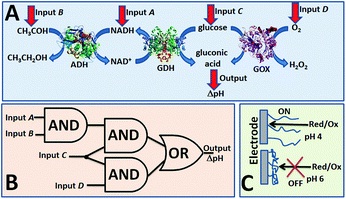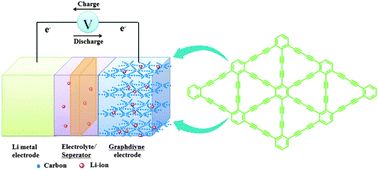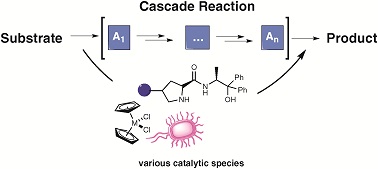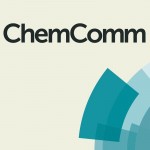When research in a particular area reaches saturation point, the question of future applications becomes critically important. This recent Feature Article in ChemComm considers molecular logic gates, which have not yet achieved pure computational applications (with their hoped for advantages) due to limitations caused by noise build-up and cross-talk between various biomolecular elements. Thus they are unable to compete with electronic computing devices. The authors ask the question: what potential applications are there that justify the continued research in this field?
Evgeny Katz from the Department of Chemistry and Biomolecular Science at Clarkson University with Sergiy Minko from the Nanostructured Materials Lab at the University of Georgia lead the reader through a short overview of potential answers. These include “smart” switchable membranes, electrodes, biofuel cells and drug-releasing systems.
The use of biochemical data processing to produce a yes/no answer provides the opportunity for direct coupling with signal-responsive materials to produce a closed-loop “sense/act” operation. This ability has the potential to transform the field of biosensors and bioactuators.

(A) A biocatalytic cascade activated by enzyme–substrate inputs and resulting in the in situ produced pH changes. (B) The logic circuitry equivalent to the biocatalytic cascade. (C) pH-switchable electrode interface modified with a polymeric brush.
The authors could be considered brave to ask the question of such a popular focus of research, but this article provides an opportunity for reflection and thought about what biochemical computing research can uniquely achieve. Having read this article I was left with a sense of excitement at the specific in vivo sensing possibilities that biochemical computing provides. To find out if you think the opportunities are exciting too, read the article today!
To read the details, check out the ChemComm article in full:
Enzyme-based logic systems interfaced with signal-responsive materials and electrodes
Evgeny Katz and Sergiy Minko
Chem. Commun., 2015, 51, Advance Article
DOI: 10.1039/C4CC09851J













 Scientists in France and Germany have made use of
Scientists in France and Germany have made use of  Reusable
Reusable 
 Recently, visible light, a sustainable and affordable energy resource, gained substantial interest with its capability to selectively access chiral molecules from prochiral substrates without undesirable by-products. Transformations including aldehyde α-functionalization and [2+2] cycloadditions demonstrate the potential of visible light in the presence of a photosensitizer.
Recently, visible light, a sustainable and affordable energy resource, gained substantial interest with its capability to selectively access chiral molecules from prochiral substrates without undesirable by-products. Transformations including aldehyde α-functionalization and [2+2] cycloadditions demonstrate the potential of visible light in the presence of a photosensitizer.





 Super-dipoles uncovered in chloroform by chemists in the UK could
Super-dipoles uncovered in chloroform by chemists in the UK could 

